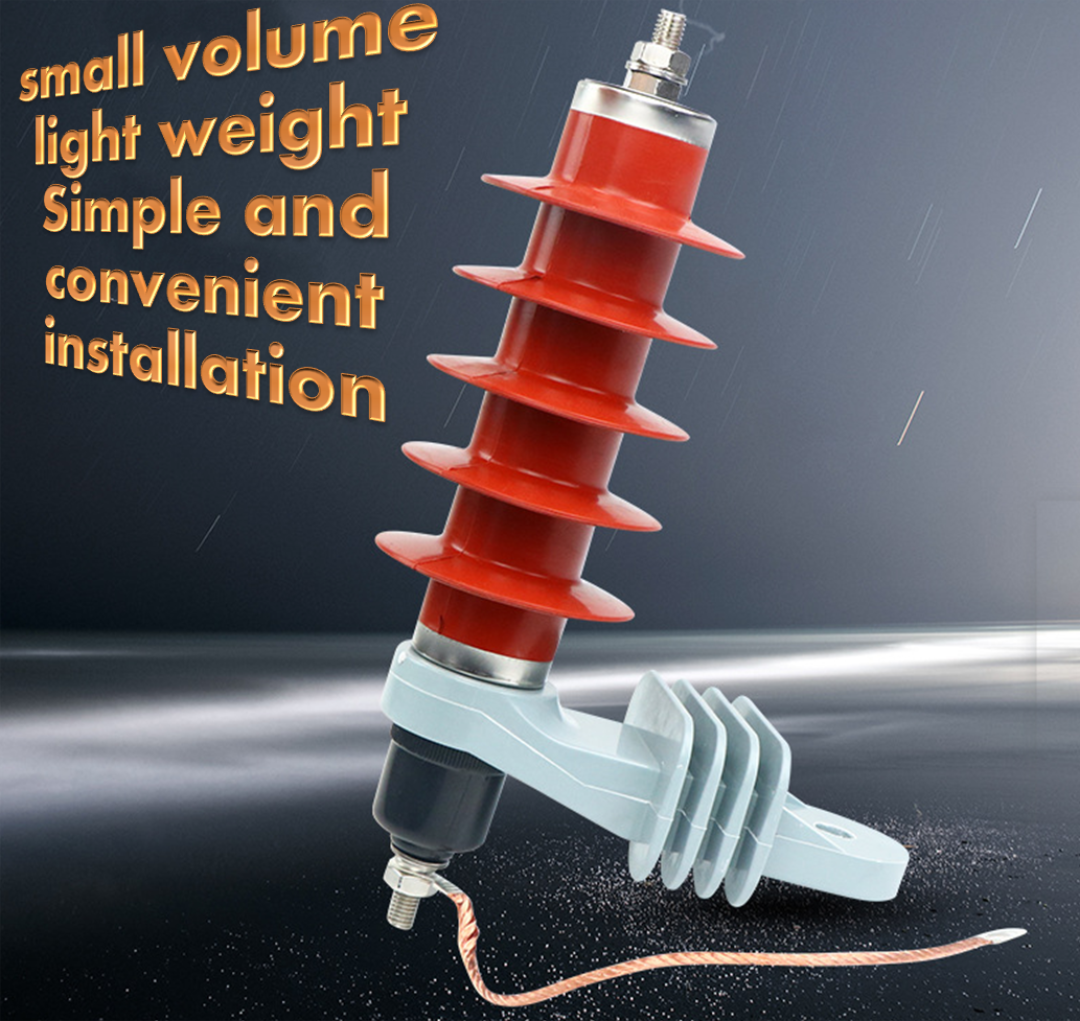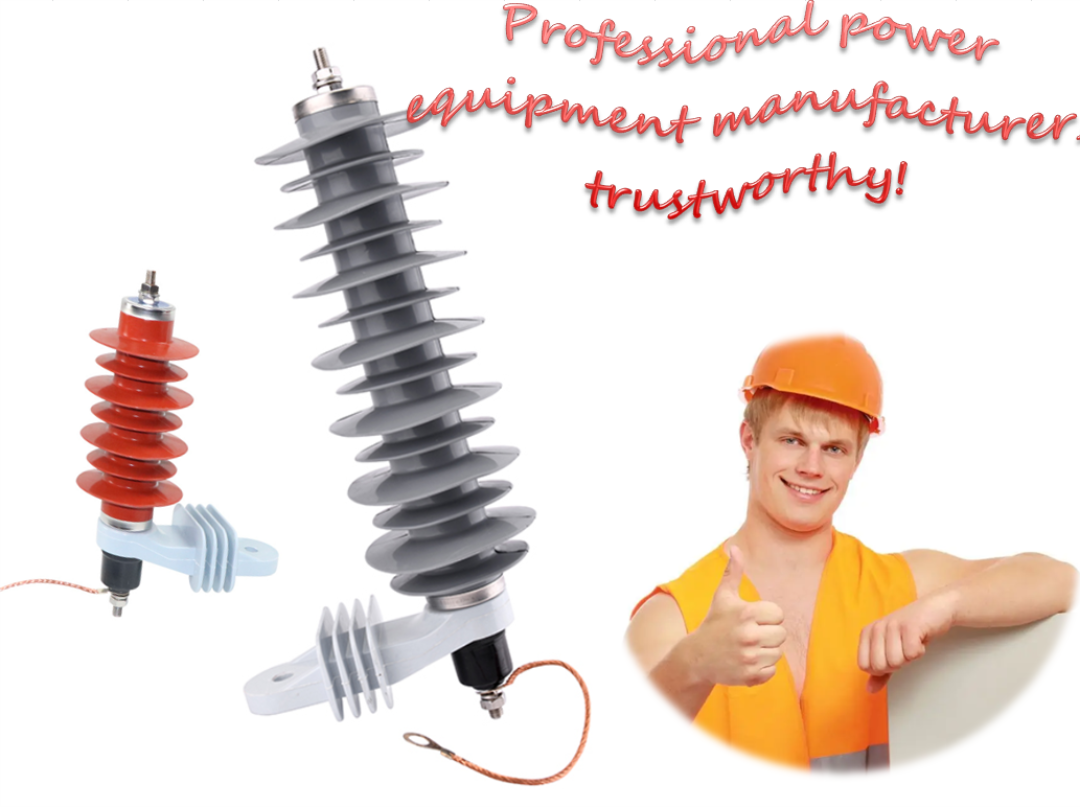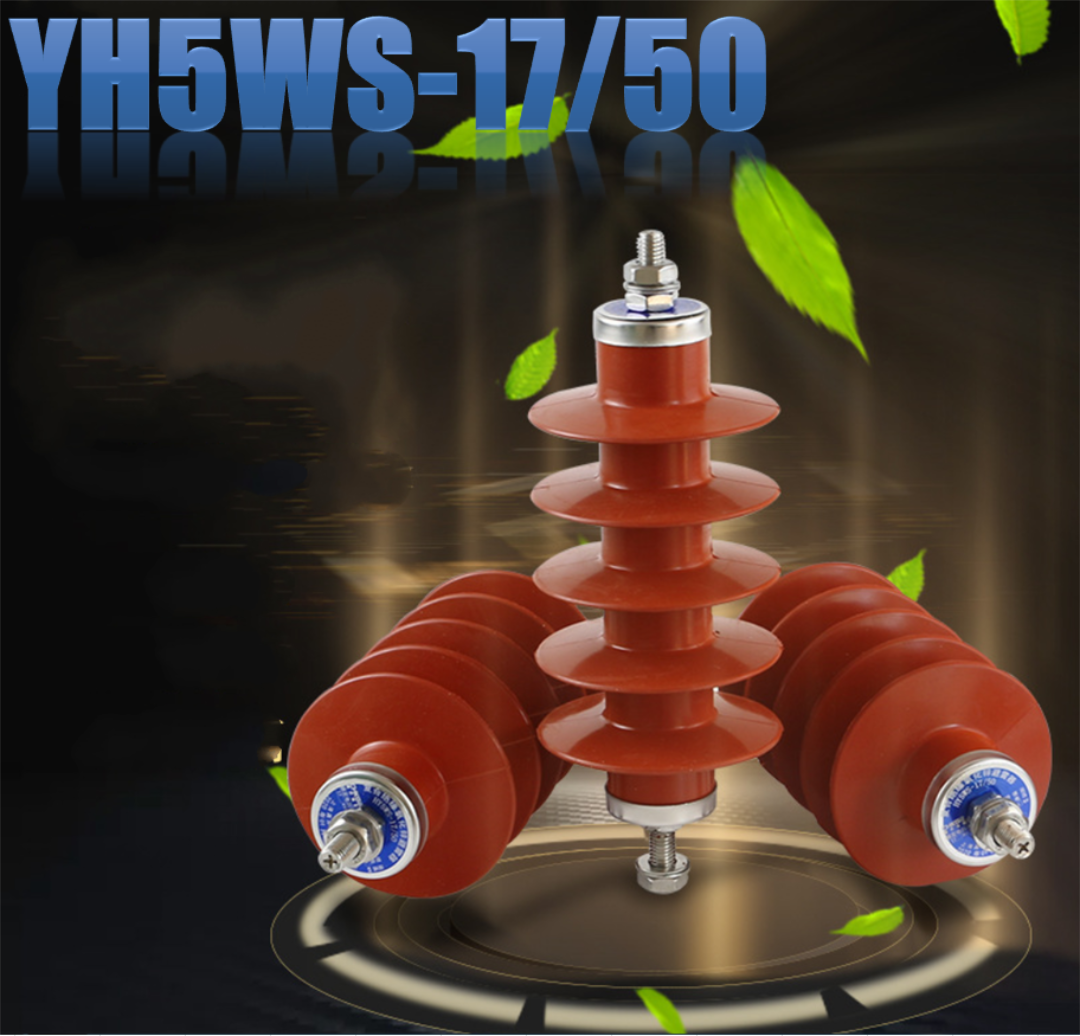Surge arrester characteristics:
1. The zinc oxide arrester has a large flow capacity,
which is mainly reflected in the ability of the arrester to absorb various lightning overvoltages, power frequency transient overvoltages, and operating overvoltages. The flow capacity of the zinc oxide surge arresters produced by Chuantai fully meets or even exceeds the requirements of national standards. The indicators such as line discharge level, energy absorption capacity, 4/10 nanosecond high current impact resistance, and 2ms square wave flow capacity have reached the domestic leading level.
2. Excellent protection characteristics
of zinc oxide arrester Zinc oxide arrester is an electrical product used to protect various electrical equipment in the power system from overvoltage damage, and has good protection performance. Because the nonlinear volt-ampere characteristics of the zinc oxide valve is very good, only a few hundred microamps of current flow through under the normal working voltage, which is convenient to design into a gapless structure, so that it has good protection performance, light weight and small size. feature. When the overvoltage invades, the current flowing through the valve increases rapidly, and at the same time limits the amplitude of the overvoltage and releases the energy of the overvoltage. After that, the zinc oxide valve returns to the high-resistance state to make the power system work normally.
3. The sealing performance of the zinc oxide arrester is good. The
arrester components adopt high-quality composite jacket with good aging performance and good air tightness. Measures such as controlling the compression of the sealing ring and adding sealant are adopted. The ceramic jacket is used as the sealing material to ensure reliable sealing. The performance of the arrester is stable.
4. The mechanical performance of the zinc oxide arrester
mainly considers the following three factors:
⑴The earthquake force it bears;
⑵The maximum wind pressure acting on the arrester ⑶The
top of the arrester bears the maximum allowable tension of the wire.
5. Good
anti-pollution performance of zinc oxide arrester No gap zinc oxide arrester has high pollution resistance performance.
The creepage specific distance grades stipulated by the current national standards are:
⑴Class II moderately polluted areas: creepage specific distance 20mm/kv
⑵Class III heavily polluted areas: creepage specific distance 25mm/kv
⑶IV class extraordinarily polluted areas: creepage specific distance 31mm /kv
6. High operating reliability of zinc oxide arrester The reliability
of long-term operation depends on the quality of the product and whether the selection of the product is reasonable. The quality of its products is mainly affected by the following three aspects:
A. The rationality of the overall structure of the arrester;
B. The volt-ampere characteristics and aging resistance of the zinc oxide valve plate ;
C. The sealing performance of the arrester.
7. Power frequency tolerance
Due to various reasons in the power system such as single-phase grounding, long-term capacitive effects, and load shedding, the power frequency voltage will increase or a transient overvoltage with a higher amplitude will be generated. Ability to withstand a certain power frequency voltage rise within a certain period of time.
Arrester use:
1. It should be installed near the side of the distribution transformer. The
metal oxide arrester (MOA) is connected in parallel with the distribution transformer during normal operation, with the upper end connected to the line and the lower end grounded. When there is an overvoltage on the line, the distribution transformer at this time will withstand the three-part voltage drop generated when the overvoltage passes through the arrester, lead wire and grounding device, which is called residual voltage. In these three parts of overvoltage, the residual voltage on the arrester is related to its own performance, and its residual voltage value is certain. The residual voltage on the grounding device can be eliminated by connecting the grounding downconductor to the distribution transformer shell, and then connecting it to the grounding device. How to reduce the residual voltage on the lead becomes the key to protecting the distribution transformer. The impedance of the lead is related to the frequency of the current passing through it. The higher the frequency, the stronger the inductance of the wire and the greater the impedance. It can be seen from U=IR that in order to reduce the residual voltage on the lead, the impedance of the lead must be reduced, and the feasible way to reduce the impedance of the lead is to shorten the distance between the MOA and the distribution transformer to reduce the impedance of the lead and reduce the voltage drop of the lead, so It is more appropriate that the arrester should be installed closer to the distribution transformer.
2. The low-voltage side of the distribution transformer should also be installed
If there is no MOA installed on the low-voltage side of the distribution transformer, when the high-voltage side surge arrester discharges the lightning current to the earth, a voltage drop will occur on the grounding device, and the voltage drop will act on the neutral point of the low-voltage side winding through the distribution transformer shell at the same time. Therefore, the lightning current flowing in the low-voltage side winding will induce a high potential (up to 1000 kV) in the high-voltage side winding according to the transformation ratio, and this potential will be superimposed with the lightning voltage of the high-voltage side winding, resulting in the neutral point potential of the high-voltage side winding rises, breaking down the insulation near the neutral point. If MOA is installed on the low-voltage side, when the high-voltage side MOA discharges to raise the potential of the grounding device to a certain value, the low-voltage side MOA starts to discharge, so that the potential difference between the low-voltage side winding outlet terminal and its neutral point and the shell decreases, so that Can eliminate or reduce the influence of "reverse transformation" potential.
3. The MOA ground wire should be connected to the distribution transformer shell
. The MOA ground wire should be directly connected to the distribution transformer shell, and then the shell should be connected to the ground. It is wrong to connect the grounding wire of the arrester directly to the ground, and then lead another grounding wire from the grounding pile to the transformer shell. In addition, the ground wire of the arrester should be as short as possible to reduce the residual voltage.
4. Strictly follow the requirements of the regulations for regular maintenance tests.
Periodically measure the insulation resistance and leakage current of the MOA. Once the MOA insulation resistance is significantly reduced or broken down, it should be replaced immediately to ensure the safe and healthy operation of the distribution transformer.
Arrester operation and maintenance:
In daily operation, the pollution status of the porcelain sleeve surface of the arrester should be checked, because when the porcelain sleeve surface is seriously polluted, the voltage distribution will be very uneven. In an arrester with parallel shunt resistance, when the voltage distribution of one of the components increases, the current passing through its parallel resistance will increase significantly, which may burn out the parallel resistance and cause failure. In addition, it may also affect the arc extinguishing performance of the valve arrester. Therefore, when the surface of the lightning arrester porcelain sleeve is seriously polluted, it must be cleaned in time.
Check the lead wire and grounding down-lead of the arrester, whether there are burn marks and broken strands, and whether the discharge recorder is burned. Through this inspection, it is easiest to find the invisible defect of the arrester; Ingress of water and damp can easily cause accidents, so check whether the cement joint at the joint between the porcelain sleeve and the flange is tight, and install a waterproof cover at the lead wire of the 10 kV valve-type arrester to prevent rainwater from infiltrating; check the arrester and the protected electrical Whether the electrical distance between the equipment meets the requirements, the lightning arrester should be as close as possible to the protected electrical equipment, and the lightning arrester should check the action of the recorder after the thunderstorm; check the leakage current, and when the power frequency discharge voltage is greater than or less than the standard value, it should be overhauled and test; when the discharge recorder operates too many times, it should be overhauled; if there are cracks at the joint between the porcelain sleeve and the cement; when the flange plate and the rubber pad fall off, it should be overhauled.
The insulation resistance of the arrester should be checked regularly. The 2500 volt insulation meter is used for measurement, and the measured value is compared with the previous result. If there is no obvious change, it can continue to be put into operation. When the insulation resistance drops significantly, it is generally caused by poor sealing and damp or spark gap short circuit. When it is lower than the qualified value, a characteristic test should be carried out; when the insulation resistance increases significantly, it is generally due to poor contact or breakage of the internal parallel resistance As well as spring relaxation and internal component separation.
In order to discover the hidden defects inside the valve arrester in time, a preventive test should be carried out before the annual thunderstorm season.

Post time: Dec-15-2022


